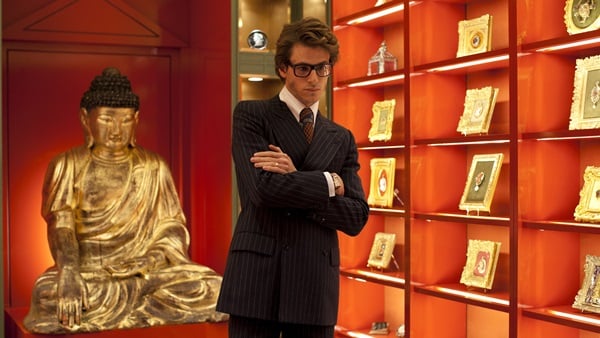People
New Biopic Reveals Yves Saint Laurent As Brilliant But Tortured Artist
Was Saint Laurent an artist or a designer first?

Was Saint Laurent an artist or a designer first?

Graham Fuller

What did Yves Saint Laurent want?
One thing is certain from Bertrand Bonello’s Saint Laurent—the latest and by far the better of the two fictional films about the French couturier to open in theaters in the space of 11 months—is that he aspired to make women’s clothing that could be considered nothing less than great art.
His influencing by such artists as Mondrian (the famous 1965 wool cocktail dresses), Poliakoff, Malevich, Van Gogh, Braque, and Matisse is well-known (see First-Ever Yves Saint Laurent Exhibition Will Land On British Soil and See Highlights of the Met Costume Institute’s Dramatic New China Exhibit).
Bonello doesn’t sell this art dream short, hyperbolize it, or draw conclusions about whether Saint Laurent (Gaspard Ulliel) ultimately realized it. But, in punctuating the movie with offhand shots of him effortlessly sketching his exquisite creations as he dreams them up, the director transcends the notion that a designer’s sketches are merely blueprints and grants the film the intermittent aura of a peculiarly delicate artist biopic (see Will Art Fill The Runways at New York Fashion Week? and Cindy Sherman Reimagines Louis Vuitton Monogram).
It is perhaps the most touching thing about it given that these thoughts in pencil suddenly explode into YSL revolutions like 1971’s “Homage aux Années 40s.” Inspired by the defiantly elegant and arrogant flea-market-culled wartime look of women in Occupied Paris and the example of Yves’ muse Loulou de la Falaise (Léa Seydoux), this scandalous collection—with its turbans, masculine tailored jackets, and fox fur “chubbies”—remade Quartier Pigalle street chic as a kind of aristocratic, androgynous Orientalism.
Outside the science-lab atmosphere of his studio, Saint Laurent is an enigma, whose emotional wants are hard to gauge. He was a Dior designer in his mid-twenties when he was conscripted into the French army at the time of the Algerian War. The hazing he suffered during his 20 days as a soldier in 1960 and his subsequent psychiatric treatment was, he alleged, the source of his mid-life problems, including his drug use.
There’s a tension in the film between his Apollonian desire for control, expressed even as death approaches when, played as a prematurely aged recluse by The Damned’s Helmut Berger, he arranges domestic objects on a coffee table, and his surrendering to Dionysian jet-set excess circa 1973.
As non-judgemental as Bonello is, the impressionable Yves’ temporary wresting away from his long-suffering life and business partner Pierre Bergé (an unrecognizable Jérémie Renier) by Karl Lagerfeld’s sometime lover Jacques de Bascher (Louis Garrel) is presented as The Fall. Indeed, a shot of the mad-eyed Jacques, a patterned scarf on his shoulder, posing like a cobra about to strike at Yves, presages the designer’s nightmare of a serpent slithering across his bed. In this account, it was Bascher (eventually an AIDS victim) who introduced Yves to crusing in Paris’s parks, where he enjoyed his most pleasurably destructive degradations. Yet, played as he is with shyness and gentility by Ulliel, Yves seems as out of place at Bascher’s living-room orgies as he does disco-dancing with Loulou and her sky-high fellow muse Betty Catroux (Aymeline Valade). It’s as if he knows the debauchery is a stage he simply has to get through.
Bonello’s masterstroke was to fracture the film’s linear time so that the mess of Yves’ existence mirrors his consciousness at a point of emotional exhaustion, his memories of youth (when he was the house designer for his flirtatious aunt, who knew she was on to a good thing) colliding asynchronously with his present anxieties. It comes as no surprise that current Saint Laurent insiders favor Jalil Lespert’s hagiographic Yves Saint Laurent (2014) over Bonello’s fabulously baroque and kaleidoscopic deconstruction, but paradoxically there’s more real love for fashion’s pre-eminent modernizer in the latter.